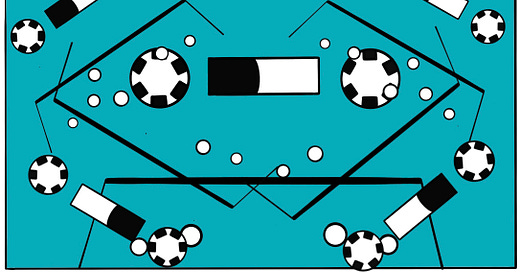Hi, I’m Matt Tillotson, and this is Matt’s Mix Tape: ideas for remixing the Side B of life.
When tech eliminates the annoying.
37 years later, that DJ still pisses me off.
1984. I’m working on a mix tape. Van Halen’s “Jump” was a must-add to the mix. Jump has that amazing synth intro before David Lee Roth declares, “I get up, and nothin’ gets me down,” and the song is off and running.
So I called the local yokel DJ in my small Michigan hometown and requested the song. I asked if he would play the intro clean all the way through without stepping on it with talking.
Of course the guy knew the annoying kid caller wanted to record the song off the radio. He decided it would be hilarious to talk over the entire intro up the point Roth draws a breath to sing the first line.
I still think about that guy, when I need something to be mad about.
But young me had the last laugh. I got a “1984” cassette for my birthday and made that mix tape anyway, clean Jump intro and all. Take that, yokel DJ, wherever you may be across this fair land today.
Such were the trials and travails of mix tape-making in the 1980s.
Playlists: the clutterless collection.
Today, making mix tapes (the kids call them playlists now) is comparatively effortless. The combinations are constrained only by the breadth of your music catalog knowledge and your skills in combining songs into various use cases and categories.
Songs are now my favorite thing to collect.
No incremental cost. No incremental clutter, unlike the baseball cards or cassette tape collections of yore.
Technically, there’s a distinction between playlists and collections:
Collections bring songs or pieces together around some common theme. Those themes can vary widely: the artist or the genre are common examples, but they can be more interesting too. Songs that make you feel a certain way, or that you listened to in a particular year. Pieces that come from a particular period of time, or that showcase a particular instrument. For collections, the order of the songs isn’t really important — they’re likely to be played on shuffle anyways.
Whereas with a true playlist, the order of the songs matters.
They’re designed not just to collect similar songs, but to create some sort of arc, to tell a story or create a certain feeling. The order of a playlist is crucial, and the relationship between songs and their transitions are what make a playlist successful.
Ok, fine. Collections it is. By year, by decade, by genre. Songs to run to, songs to write to. Songs for seasons past or present. Songs for morning or night.
There’s something therapeutic about building playlists (or collections—whatever). Playlists allow you to revisit the past, celebrate the present, and share those moments with others.
Unearthing playlist gems.
My largest playlist covers 960 (and counting) songs from the 1980s. Many songs are hits I remember from my early youth.
But the playlist also contains deep cuts like “The Show Goes On,” from Bruce Hornsby and The Range’s “Scenes From The Southside” album released in 1988.
The Show Goes On wasn't a hit, but it should have been. Hornsby is an incredible piano player, and the song was featured in Ron Howard’s fireman movie “Backdraft.”
It’s been fun to chase down some favorite instrumentals from the era.
Bueller’s Escape
Remember when Ferris Bueller sprinted and shortcutted his way through his neighborhood, trying to beat his parents home?
He was accompanied by March of The Swivel Heads, by English Beat.
Planes, Trains, and Instrumentals
Thanksgiving is coming up in the U.S., meaning it’s time for another watch of Planes, Trains, and Automobiles from 1987. The movie sneakily features numerous great instrumental tunes, including these two.
First song: an exasperated Neal Page gets a motel room and leaves Dell Griffith out in the dark and frozen parking lot.
It’s just Dell, light snowfall, and “Book of Love,” by Modigliani.
Second song: Page finally made it back to Chicago. He’s on the L and home is within reach. Then the movie hits you with its twist.
Page’s thoughts montage is accompanied by Power to Believe by The Dream Academy. The English band was best known for its top-10 hit “Life in a Northern Town.” (Incidentally, this song would fit perfectly in any nighttime Miami Vice scene. Strong Phil Collins vibe here.)
It’s fun to research this stuff, find the hidden gems, and build out a collection.
A good playlist builder is both archeologist and architect.
SongShift: The platform bridge.
Whether you use Spotify, Apple Music, or another service, you’re not locked out of using playlists from a competing platform. SongShift grabs playlists from one music service and ports them to another.
Bonus link: Amazon Music has opened its entire catalog to Prime customers at no additional charge. The catch: you have to use shuffle mode. But you can build playlists or shuffle by artist or album.
Have some fun. Build some song collections. Just don’t talk over the intros.
Thank you for reading.
Whatever you’re working on or working through: keep showing up.
If you liked this edition, would you mind giving the heart a click? Thank you.





Awesome piece, Matt!
In some ways, the 1980s was the decade of songs and soundtracks. I have a whole bunch from that era, and I discovered them in the late 1990s and 2000s. I miss the days of good soundtracks, something that once upon a time Hollywood excelled at.